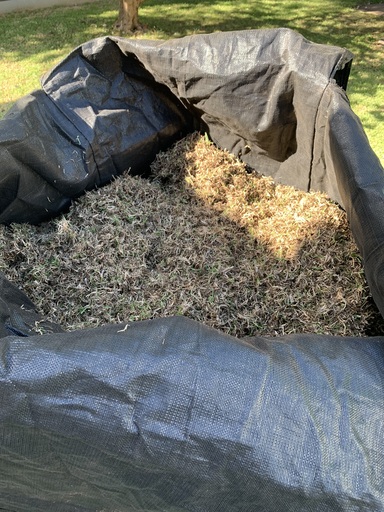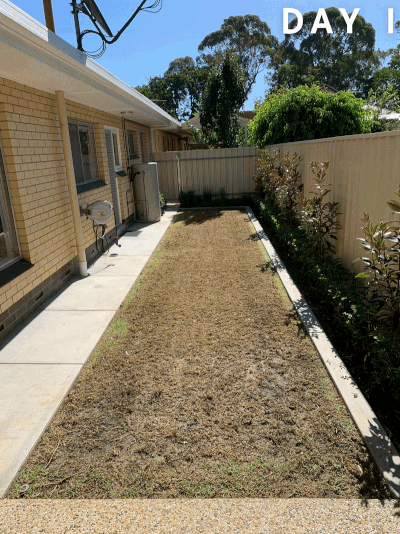- Published on
Lawn Renovations - Autumn 2022
- Authors

- Name
- Josh Di Mella
Lawns that are well maintained are often healthier, greener and much more attractive. This maintenance comes in a lot of different forms - regular mowing, watering, fertilizing etc. Occasionally, you need to go that one step further and renovate the lawn.
This is something I went through in August of 2022, and will share some of the more significant works undertaken - scarifying and coring.
Scarifying
Scarifying (or lawn scarification) is a process that removes thatch from a lawn, and is also known as "dethatching", or "power raking".
Thatch is essentially side shoots of grass which normally create a lush, thick lawn, but then die off to make way for new runners. It resides in amongst the grass plants, just above the soil. This dead grass then becomes intertwined with newer shoots of grass, and this composite is known as thatch.
Some thatch is good for lawns - around a few centimeters is good, as it protects the root of the grass while allowing nutrients through to the soil and grass roots, acts as a buffer against extreme temperatures and helps to prevent soil compaction. The issue, however, with too much thatch is that it stops air, nutrients, and water from reaching the roots of the lawn, and therefore stops healthy growth and nourishment. It also creates an uneven lawn and the latticework of partially decomposed material encourages disease.

Coring
Coring is an important practices when it comes to renovating and maintaining the health and vigour of your lawn. Coring is the physical removal of small plugs/cores from the soil and sward of the lawn. This is achieved using a coring machine which punches 3 inch holes into the lawn, removing the plugs and leaving them on the surface of the lawn.
The benefits from these holes in the lawn is probably one of the most important part of any renovation work carried out on a lawn. Coring relieves compaction, as the small holes allow water, oxygen and nutrients to instantly flood into the root zone.

Results
As expected, Coring & Scarifying were both successful, with the latter removing a significant amount of thatch.

Here's a timelapse of the regrowth over the span of ~1 month:

Whats Next?
Spring is fast approaching - once it hits, it'll be time to drop the lawn mower down a level for a nice clean & short cut. It's also a good time to add a bit of top soil & sow seeds in some of the dirt patches that linger from the previous disease/pest issues.